Besides being known as a weight-loss supplement, green coffee beans have much more to offer. In this article, we'll uncover what exactly green coffee beans are, how they're processed, and which unique flavors and health benefits they bring to the table.

Whether you're a coffee aficionado looking for a healthier alternative, or simply curious about this lesser-known form of your daily brew, you're in the right place to learn about the diverse aspects of green coffee beans.
Understanding Green Coffee Beans
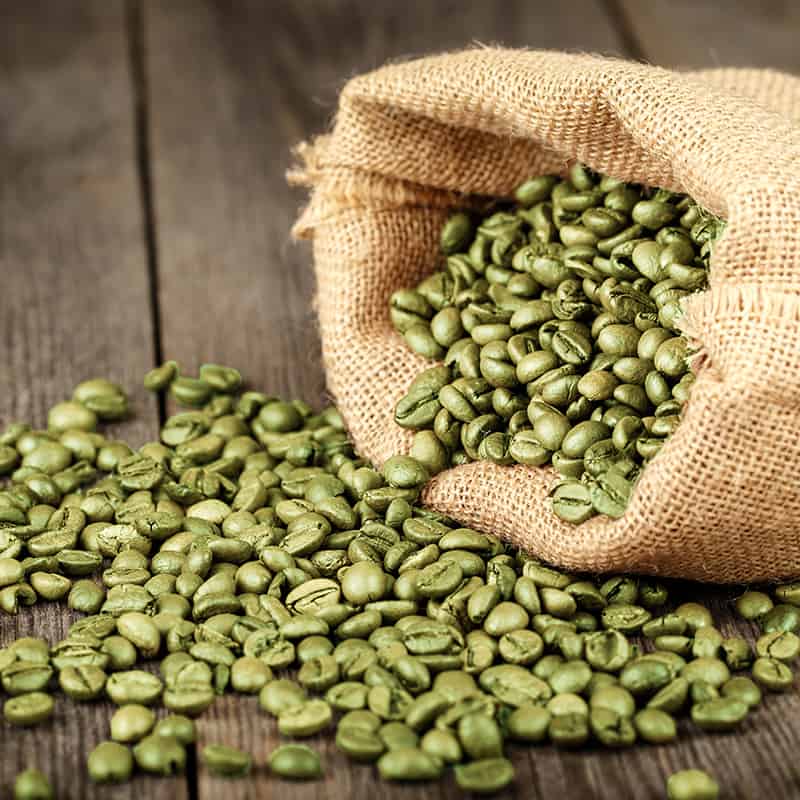
Green coffee beans are essentially the seeds of the coffee cherry, harvested directly from the coffee tree before they undergo any roasting process. Unlike the dark, roasted beans most are familiar with, these beans retain their natural green color — a hallmark of their purity and unprocessed state.
Originating from the coffee tree, these beans are the core of what we know as coffee. Every coffee cherry contains seeds, which, when not roasted, are the green coffee beans we refer to. The absence of the roasting process is what fundamentally sets green coffee beans apart from regular, roasted coffee.
While roasting helps in developing the rich flavors and aroma we associate with coffee, it also reduces the levels of certain compounds beneficial for health, particularly chlorogenic acid.
Thus, the flavor profile of green coffee is markedly different from that of roasted coffee. While roasted coffee offers a comforting array of bitter and acidic flavors, green coffee beans tend to have a more herbal, grassy taste, which can be an acquired preference but intriguing for those seeking a new coffee experience.
Why Green Coffee Beans Are Good For You

Green coffee beans distinguish themselves from their roasted counterparts by retaining a high content of chlorogenic acid, a powerful antioxidant. This compound also aids in regulating blood sugar levels and managing blood pressure.
Additionally, these beans offer a unique, more herbal taste profile that's less bitter, appealing to those looking to explore different flavors in their coffee routine. Home roasting provides the opportunity to tailor these flavors to personal preferences while keeping the health benefits intact.
Here’s a closer look at the health benefits attributed to green coffee beans:
Weight Loss
Green coffee beans are often associated with weight loss, thanks to the metabolic influences of chlorogenic acid. Some studies suggest that green coffee bean extract can contribute to modest weight loss, although results can vary.
Blood Sugar Regulation
Chlorogenic acid's effect on blood sugar levels is another praised benefit. It may help moderate blood glucose levels post-meal, which is crucial for those managing or aiming to prevent diabetes.
Blood Pressure
Early research indicates green coffee might positively affect blood pressure, providing a potential natural option for hypertension management.
Antioxidant Properties
Green coffee beans are also a rich source of antioxidants, fighting oxidative stress and lowering the risk of chronic diseases by protecting the body from harmful free radicals.
Unique Taste and Flavor
While not a health benefit per se, the unique flavor of green coffee provides a novel experience for coffee enthusiasts, offering a break from the traditional flavors of roasted coffee and possibly encouraging more consumption of this healthful beverage.
It's important to remember that while green coffee beans offer a variety of health benefits, they should be part of a balanced diet and healthy lifestyle. Consulting healthcare professionals before starting any new supplement regimen is advised to ensure that it's suitable for individual health needs and conditions.
Harvesting and Preparation
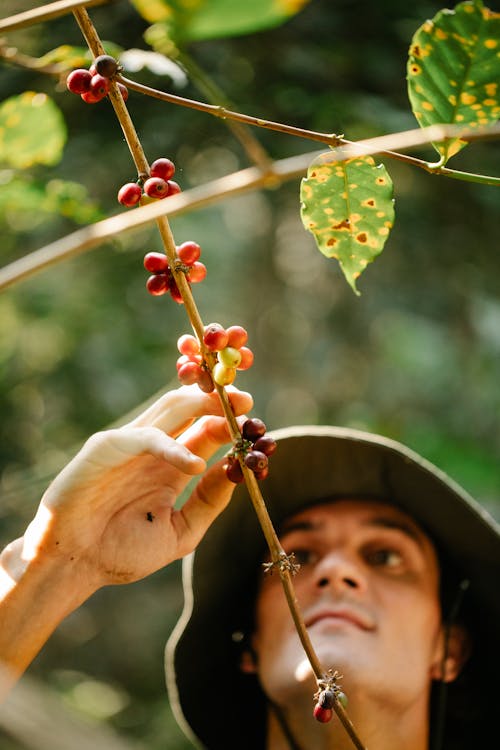
The process from the lush fields to your cup starts with the meticulous harvesting and preparation of green coffee beans. These essential steps play a significant role in shaping the beans' flavor, aroma, and potential health benefits, guaranteeing the highest quality.
Selecting the Coffee Cherries
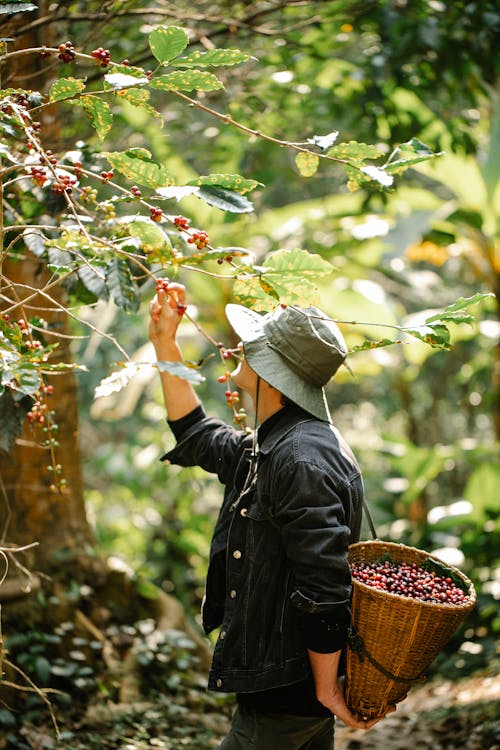
Farmers carefully select coffee cherries, a crucial choice that significantly impacts the quality and flavor of green coffee beans. This selection is based on factors like ripeness, color, and size, with the best cherries showing a specific shade of red or yellow, indicating peak ripeness depending on the variety. This precise picking process ensures that only the finest cherries, containing the prized green coffee beans, move on to the next processing stage. Such thoughtful selection is essential, laying the foundation for the coffee's overall quality, influencing its taste nuances and aromatic profile.
Processing the Cherries
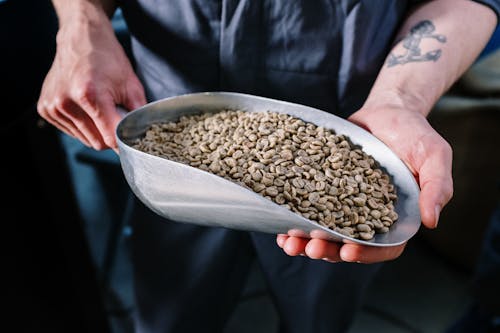
Once harvested, coffee cherries must be processed to extract the green coffee beans. This stage is critical, as the chosen method significantly influences the beans' flavor, aroma, and overall quality. The two primary processing methods are the washed (or wet) process and the natural (or dry) process, each offering a distinct profile to the final product:
Washed Process
In the washed process, cherries are first de-pulped to remove the outer skin. The beans, still encased in their mucilage (a sticky, sugary layer), are then fermented in water for 12 to 48 hours, depending on environmental conditions and desired outcomes. This fermentation helps break down the mucilage, making it easier to wash away.
After fermentation, the beans are thoroughly rinsed and then dried to the appropriate moisture content. This method tends to produce beans with a cleaner, brighter, and more consistent flavor profile, emphasizing the bean's intrinsic qualities without the influence of the cherry's sugars and yeast.
Natural Process
The natural process, on the other hand, involves drying the whole cherries in the sun, with the beans still inside, for several weeks. During this time, the beans absorb flavors from the cherry's sugars and yeast, undergoing a sort of natural fermentation. This process requires meticulous attention to prevent mold and spoilage, with cherries often turned by hand to ensure even drying. Beans processed this way typically exhibit a fuller body and sweeter, more complex flavor profiles, with nuanced notes that can range from fruity to winey.
Impact on Flavor
The choice between these methods affects not just the flavor but also the body and acidity of the coffee. Washed beans often highlight the coffee's acidity, offering a clean and vibrant cup, while naturally processed beans provide a richer, more robust flavor with a heavier body. The method selected is a matter of preference for both the farmer and the eventual drinker, with different regions and traditions swaying towards one method over the other.
Drying the Green Beans
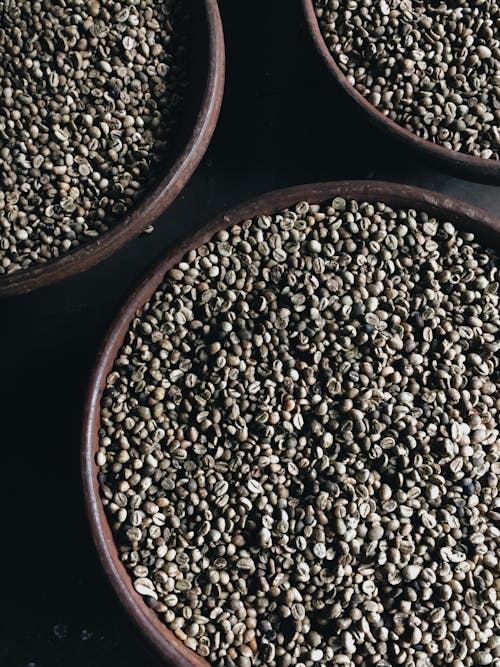
The extracted green coffee beans are then dried to the appropriate moisture content. This step is essential for preserving their quality during storage and transport, preventing mold and spoilage.
Storing and Transporting

Finally, the dried green beans are carefully stored and transported, minimizing exposure to moisture and other quality-degrading factors. This careful handling is vital to ensure that the beans maintain their integrity and reach consumers and roasters in optimal condition.
Home Roasting and Brewing
Home roasting and brewing offer coffee aficionados the unique opportunity to personalize their coffee experience from bean to cup. This hands-on approach not only deepens one's understanding and appreciation of coffee but also allows for customization of flavor and strength to suit individual preferences.
Through home roasting, enthusiasts can experiment with different roast profiles, while brewing at home offers the freedom to fine-tune the extraction process, exploring various dimensions of taste and aroma. If you're interested in roasting and brewing your own beans, then follow these procedures:
Choosing Your Beans
Buying green coffee beans gives you the opportunity to select from a variety of origins and bean types, each offering unique flavors and characteristics. This choice is the first step in customizing your home roasting and brewing experience.
Roasting the Beans
The home roasting process involves applying heat to the green coffee beans, transforming them through various stages of color, size, and flavor development. This process allows you to create a roast profile that suits your taste preferences, ranging from light to dark.
Cooling and Resting
After roasting, the beans need to be cooled and rested to develop their full flavor profile. This resting period can vary but is crucial for achieving the final taste of your coffee.
Brewing Your Coffee
Brewing your freshly roasted coffee is the culmination of your efforts. Experimenting with different brewing methods and variables can help you find the perfect cup that highlights the unique taste and aroma of your home-roasted beans.
Enjoying the Unique Taste
Finally, savoring the coffee you've personally roasted and brewed offers a rewarding experience. This process not only allows you to enjoy a cup tailored to your preferences but also deepens your appreciation for the complexity and diversity of coffee.
Frequently Asked Questions
What exactly are green coffee beans?
Green coffee beans are the raw, unroasted seeds extracted from the fruit of the coffee cherry. Unlike roasted coffee, which is brown and has a distinct flavor and aroma, green coffee beans maintain their natural green hue and have a milder, more herbal profile.
How do green coffee beans differ from roasted coffee beans?
The primary difference lies in the roasting process. Green coffee beans are unroasted and contain higher levels of chlorogenic acid, offering unique health benefits such as aiding weight loss and improving blood sugar levels. In contrast, roasted coffee beans have undergone a heating process that alters their chemical structure, flavor, and aroma.
Why are green coffee beans becoming increasingly popular?
The rising popularity of green coffee beans is attributed to their health benefits, particularly their potential to support weight loss and blood sugar regulation due to their high chlorogenic acid content. Additionally, the trend toward natural and minimally processed foods has spotlighted green coffee as a healthier alternative.
Can home roasting and brewing of green coffee beans enhance their health benefits?
Home roasting allows you to control the roast level, which can influence the chlorogenic acid content and, consequently, the health benefits. Brewing at home also ensures you consume the coffee at its freshest, maximizing its antioxidant properties.
Are there any special considerations to keep in mind when purchasing green coffee beans?
When looking to buy green coffee beans, consider their origin, variety, and processing method, as these factors can affect both the flavor and potential health benefits. It's also essential to purchase from reputable sources to ensure you're getting high-quality beans.
Bottomline
Green coffee beans offer a fresh take on our coffee experience, blending distinct flavors with health benefits and inviting us to explore coffee in its purest form. Whether intrigued by their health perks or curious about home roasting and brewing, green coffee beans provide a pathway to discovering the essence of coffee.
For those interested on exploring into home roasting and brewing, selecting top-quality green coffee beans is essential for unlocking the finest flavors and aromas. If you want to find your perfect green coffee bean match, you may choose yours from our extensive collection.
On the other hand, if you need a guide on which coffee bean is best-suited for your preferred taste and aroma, check out Choosing the Best Coffee Beans To Roast or Brew to make the best choice for your next roasting and brewing adventures!
For now, make sure to spread this article to your coffee-loving friends and family so they're aware of the health benefits green coffee beans have to offer, one cup at a time.






Leave a comment